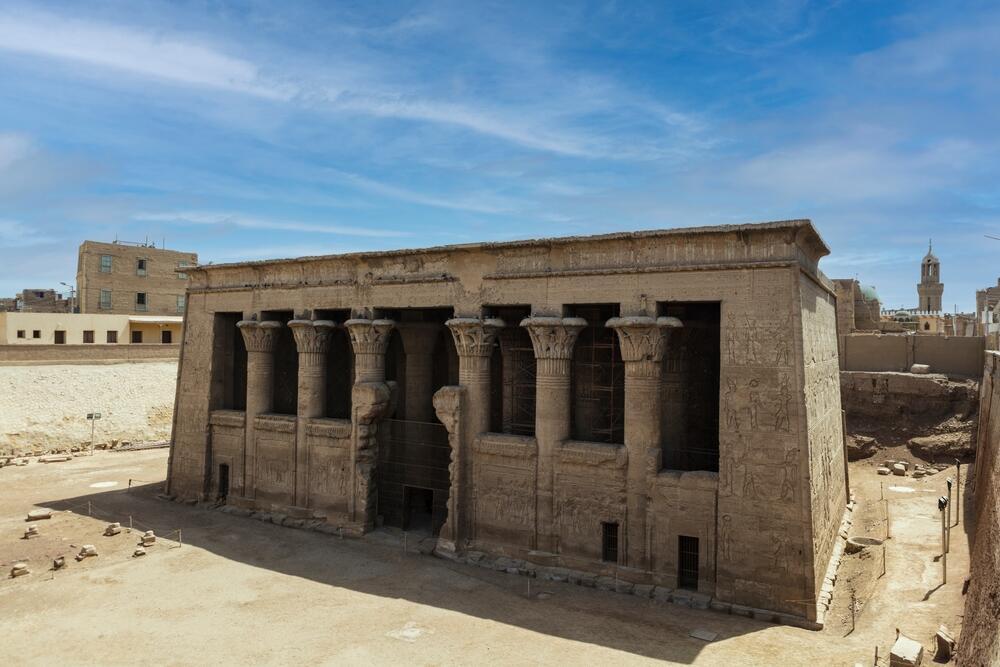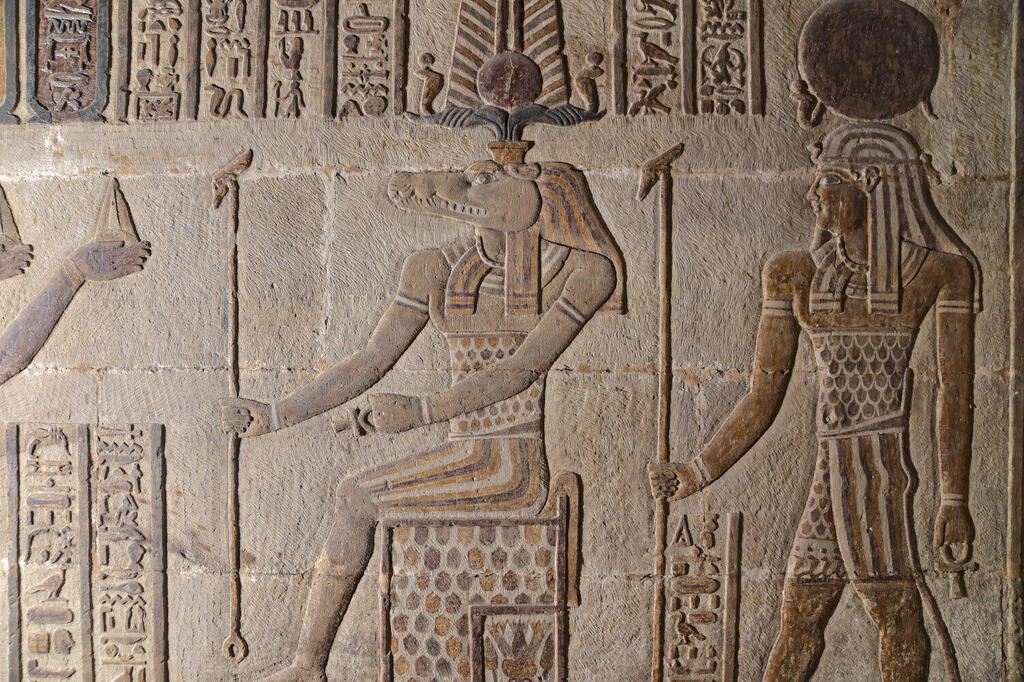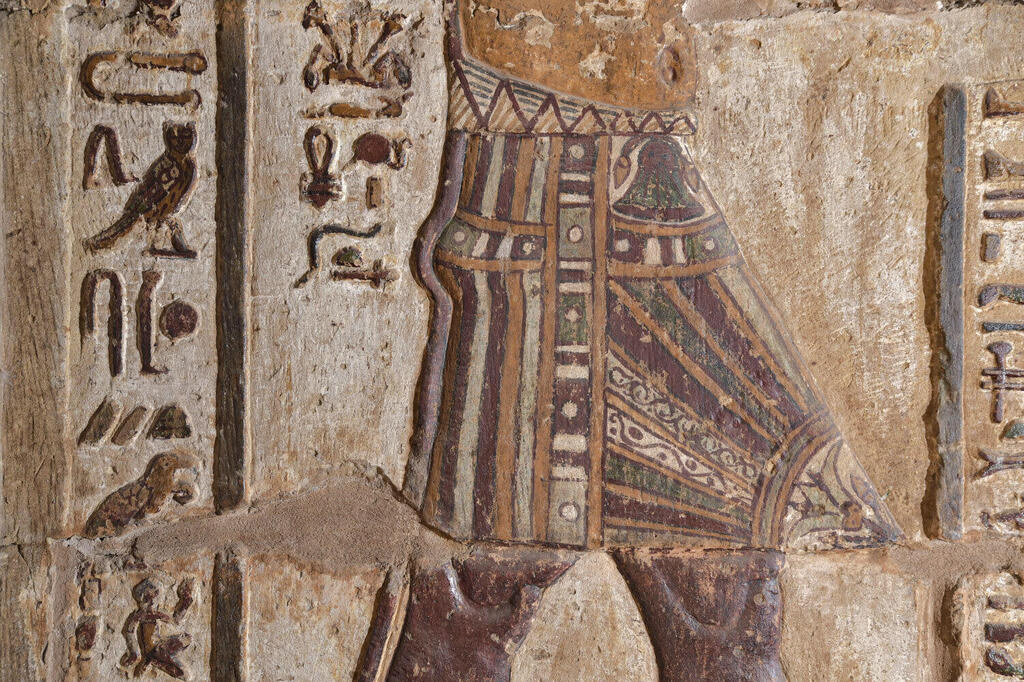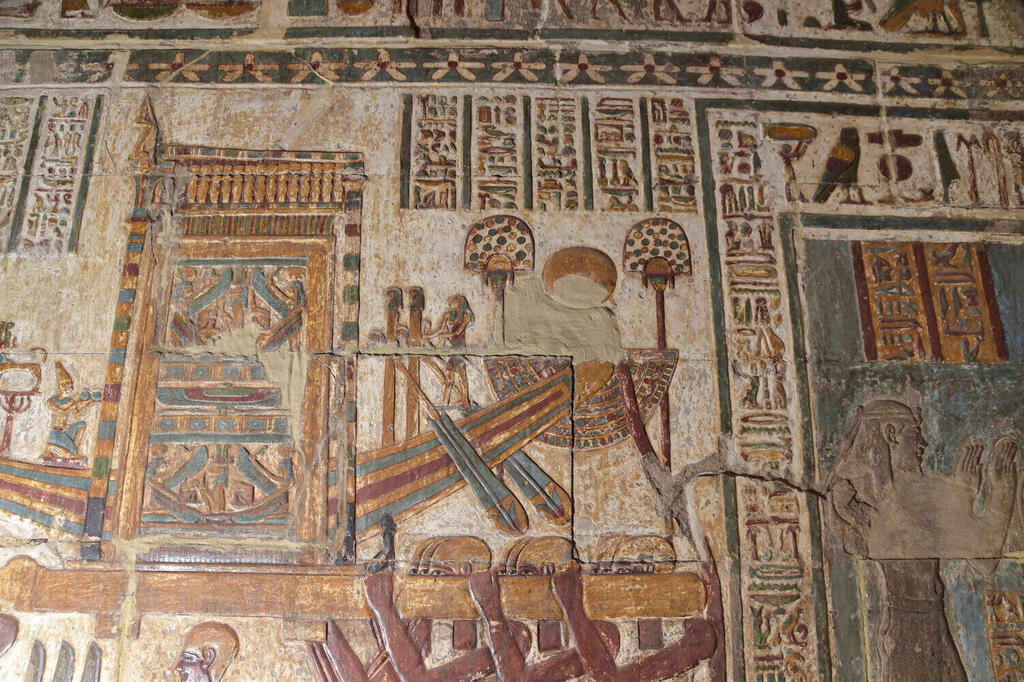Getting your Trinity Audio player ready...
Egypt's Esna Temple, located about 60 km (37 miles) south of Luxor, is undergoing extensive restoration work as part of an Egyptian-German collaboration. Although the main temple complex no longer exists, the pronaos – a vestibule leading to the inner and central sanctuary – was rediscovered in its entirety over 200 years ago, with restoration efforts ongoing since 2018.
Fires had been lit in the temple's pronaos for the past 1,800 years, one of the last to be built in ancient Egypt during the Ptolemaic period (2nd century BCE). As a result, the once colorful and vibrant wall and column decorations became blackened.
5 View gallery


Relief depicting religious ceremony dedicated to the Egyptian god Khnum
(Photo: University of Tübingen)
Over the past six years, a team of up to 30 Egyptian restorers has revealed the colors of the astronomical images covering the entire ceiling, as well as those on 18 interior columns.
This year marked the beginning of a new phase of the restoration, during which experts completed work on the southern interior wall and the southern part of the western rear wall. They uncovered the original colors, with a dominance of yellow and red pigments in the ancient structure dedicated to Khnum (the god of creation in Egyptian mythology).
This stands in sharp contrast to the use of colors in other locations, such as the Dendera Temple, dedicated to Hathor (the goddess of beauty, love, music and war in Egyptian mythology), where white and light blue tones are more prevalent.
“The greatest discovery this year was the many painted details of the clothing on the king and the deities of Esna, their crowns and their thrones," said Egyptologist Professor Christian Leitz from the University of Tubingen's Institute for Ancient Near Eastern Studies. “Previously, we could not see them at all due to the thick layer of soot over the reliefs."
The findings that have been uncovered are an integral part of meaningful scenes that cover the temple’s inner walls. Researchers were aware of the hieroglyphic texts and reliefs but the newly exposed decorations on the throne have their own significance as well. In one wall decoration, the conservation team revealed four painted bows at the bottom of the throne, possibly part of the original nine bows.
This isn't a random number; the "nine bows" is a term referring to Upper and Lower Egypt and seven other regions ruled by the king of Egypt, as well as a symbol of the Egyptian king's power against the ancient kingdom's traditional enemies.
Another example from the uncovered wall decorations can be seen in two plants adorning the king’s garments: the papyrus, symbolizing Lower Egypt and the lily, symbolizing Upper Egypt, indicating that the Pharaoh was the undisputed ruler of both parts of the land.
The most spectacular scene revealed, however, was that of the sacred boat of the god Khnum, for whom the temple was originally built and has been a UNESCO World Heritage Site since 2003.
In the scene, the boat is carried by several priests who lead it in a procession, allowing the people of Esna to approach and see the temple up close, which was otherwise closed throughout the year, except for the priests who had more lax access.
Conservation work will resume at the beginning of November, with the goal of cleaning the exterior of the temple's six front columns which could not be done in the summer due to intense heat.
The Esna Temple's pronaos is 37 meters (121 feet) long, 20 meters (66 feet) wide and 15 meters (49 feet) high. It's a sandstone structure believed to have been built before or during the reign of the Roman Emperor Claudius (41-54 CE), the Roman Empire's fourth ruler.
Estimates suggest the pronaos was much larger than the temple itself. Its location in the heart of the city of Esna likely contributed to its preservation, as it wasn't quarried for building materials like other ancient structures during Egypt's industrialization. The pronaos attracted much attention even during the time of French ruler Napoleon Bonaparte, as it was considered an ideal example of ancient Egyptian temple architecture.
Get the Ynetnews app on your smartphone:





